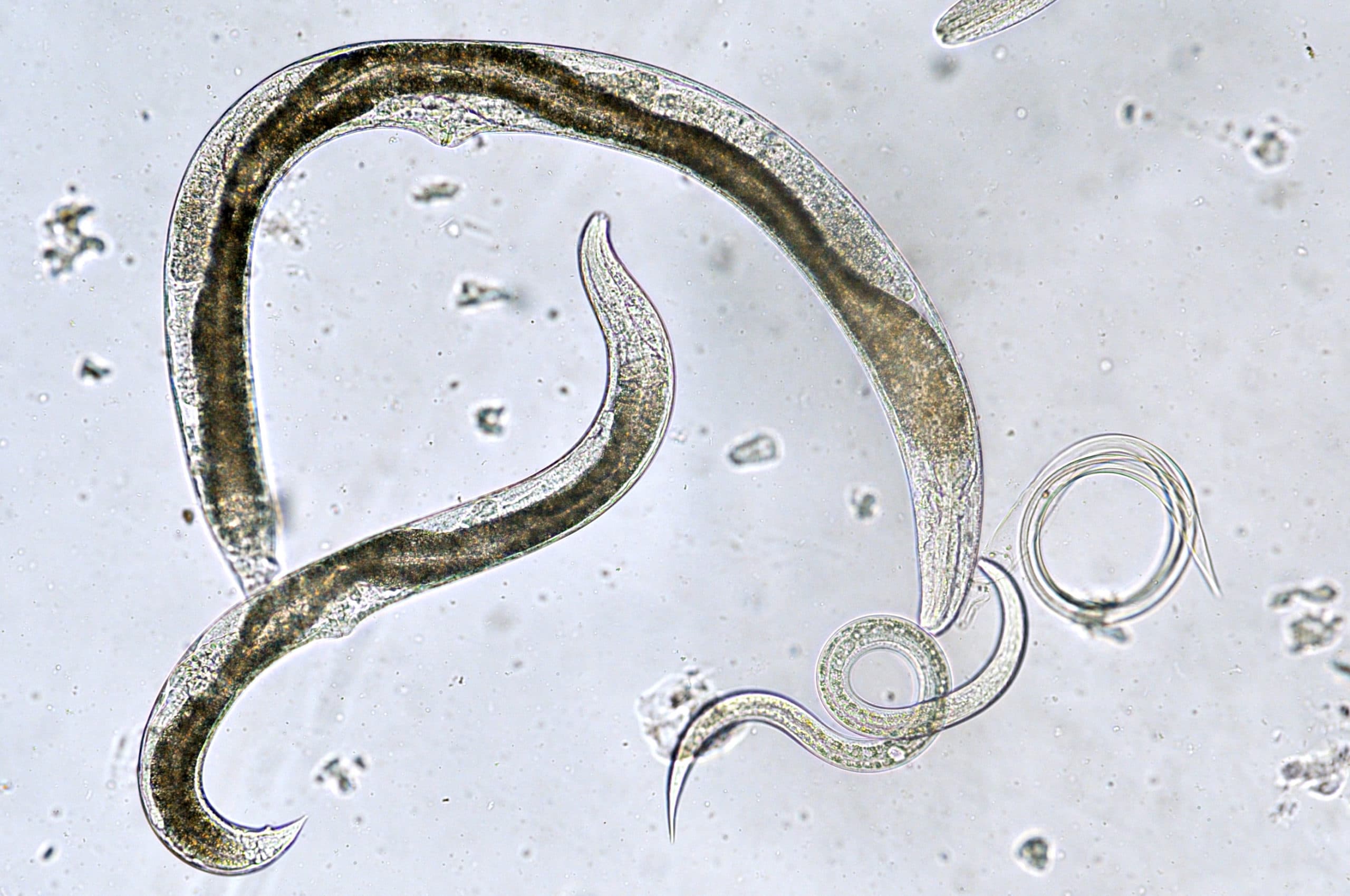Nematodes, or eelworms, are a type of round worm, and most of them are too small for us to see. You may not be aware, but nematodes are present wherever you go, from soils to the sea and from the polar regions to the tropics.
They are true masters of adapting to extreme environments. Distinguishing between different species of nematodes is a specialist skill, and there are thought to be least a million different species of nematodes although only 25,000 have been characterised. Considering their prevalence, they get rather short shrift in the media.
In terms of food growing, nematodes can be beneficial or harmful. They can help to control many plant pests and many growers take advantage of this by using them as biological controls.
When released into the soil, they enter the pest through any orifice that they can find, then release bacteria. In return for the shelter provided by the nematode, the bacteria returns the favour by killing the pest and breaking it down, providing food.
There are nematodes that will kill many of the common plant pests including slugs, sciarid fly, vine weevil, coddling moth, sawfly and cutworms. These biological controls have the advantage of being reasonably specific to the target pest, so that other wildlife is not affected.
However, not all nematodes are good news and some cause considerable damage to crops. Potato cyst nematode (PCN) can have devastating effects on potato crops and has been found in all major potato growing countries with the exception of China. They damage the roots and infested crops show patches of slow-growing, often wilted plants.
PCN can remain in the soil as resting cysts for up to 25 years, although a rotation of around 5 years is recommended to stop the pest building up. Avoiding transfer of soil between places is also important to prevent the pest from spreading around.
Root knot nematode is another pest causing widespread losses in many warmer regions of the world. It attacks a wide range of food crops and is already widespread in Southern Europe and a problem in some glasshouse crops in the UK. It causes the roots to take on an extremely twisted, distorted appearance.
Step by step guide to using nematodes to control pests
- Many biological control products use nematodes to control pests. As they are quite specific, it is important to choose the correct control for the right type of pest. Following the instructions is vital for achieving effective control.
- Nematodes can be ordered by mail order. They arrive in a sachet suspended in a paste.
- They will store in the fridge for up to a few weeks but should not be frozen. Ideally, it is best to use them straight away.
- When it comes to using them, mix the paste with a small amount of water first to make a slurry, before adding the rest of the water. This will make it easier for them to dissolve.
- Only use when the soil temperature is above 5 degrees otherwise they won’t be active against the pest.
- Stir the solution once again before applying. Use a coarse rose to apply, to make sure that the nematodes don’t get stuck in the holes.
- Keep the soil moist for at least a few weeks, to make sure that the nematodes remain active.
The Grow Your Own Wicked Leeks series is written by Garden Organic, the national charity for organic growing. Each month we bring you timely advice on what to do in your organic patch, whether you’re an experienced grower or just starting out. Share your own tips and gardening photos on social media under #GYOWickedLeeks.












0 Comments